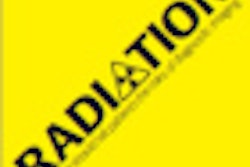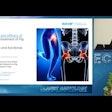VIENNA - A Dutch study presented at the European Congress of Radiology (ECR) this week has raised questions over the relationship between the risk of breast cancer in high-risk women and their exposure to radiation from a young age.
In a new meta-analysis, Dr. Marijke C. Jansen-van der Weide of University Medical Center Groningen in the Netherlands compared the effects of low-dose chest x-rays in women at high risk of developing breast cancer due to a familial or genetic predisposition versus those with no history of radiation exposure.
Women considered to be at high risk are frequently offered additional mammography screening outside national population assessment programs, due to their elevated risk of early-disease onset and potential for worse outcomes. As such, they may be exposed to radiation early and frequently in their lives.
From a meta-analysis of seven epidemiological studies, the research group uncovered several statistically significant links indicating radiation-induced breast cancer in these high-risk groups.
Findings show that exposure to radiation may increase the risk of breast cancer by a factor (pooled odds ratio) of 1.5 in mutation carriers and those with a family history of the disease. Repeated exposure could increase the risk by 2.1 times, with women exposed before the age of 20 at a risk 2.5 times that of those without any exposure to radiation.
Exposure to radiation through mammography ranged from 0.3-33 mSv, with time to diagnosis of breast cancer spanning five to 20 years following exposure.
"Four of the seven studies showed that exposure to radiation increased breast cancer risk significantly in this population, while five studies revealed a significant increase in risk due to the effects of repeated exposure," the lead researcher told ECR delegates Thursday in Vienna, Austria.
The strategy comprised a systematic search of PubMed and EMBASE/Medline for "breast neoplasms AND mass screening OR mammography OR neoplasms, radiation-induced," combined with text words focusing on high-risk women.
A total of 127 papers found were assessed using the Newcastle-Ottawa scale, of which seven were finally chosen. Each attempted to quantify the relationship between breast cancer and exposure to low-dose radiation among women with familial or genetic predisposition. Studies based on animal models were excluded.
"Based on these results, our study indicates that low-dose radiation increases breast cancer risk in high-risk women when they are exposed at a young age and are frequently exposed," Jansen-van der Weide noted.
Recommendations
It was suggested that further analysis is required to gain a more accurate picture of any causal effect for radiation-induced cancer, but the group proposed a few recommendations to minimize the potential damage to high-risk patients.
They suggested that young, high-risk women should discuss the respective benefits versus risks with their physician prior to undergoing mammography.
Alternative, nonionizing techniques may also be more appropriate for this group, while an optimum screening strategy could be developed with further research.
Surveillance program
In related work, an Italian research group led by Dr. Bea Breveglieri of the University of Modena and Reggio Emilia asked the ECR audience whether ultrasound or MRI should be used every six months to scan women at high-risk of breast cancer, such as BRCA carriers.
She based this question on the results of a 15-year follow-up study of 2,457 women, screened for breast cancer in accordance with their risk profile. The four categories were BRCA carriers and women considered to be at high, intermediate, and slightly increased risk.
The work sought to evaluate the incidence and radiological and histopathologic features of breast interval cancer (BIC), defined as breast cancer diagnosed after earlier mammography.
Participants underwent a clinical breast exam (CBE), mammography, ultrasound, and breast MRI at periodic time intervals, depending on age and risk category. All received a CBE and ultrasound every six months.
Results from the 15-year surveillance program suggested that an intensified screening program could yield benefits in detecting BIC in women at increased familial risk of breast cancer, the researchers said.
In total, 104 cancers were diagnosed (at an average age of 47.2 years), nearly one quarter of which (23%) were considered BIC. A little more than 60% of these were detected in stage I, with favorable prognostic features.
Diagnosis was made by ultrasound in 11 cases; by ultrasound plus mammography in nine cases; by ultrasound, mammography, and MRI in two cases; and in one case only with ultrasound plus MRI and CBE.
"Ultrasound every six months is useful is detecting interval breast cancer at an early stage in dense but not adipose breast," Breveglieri commented. "However, MRI remains the most sensitive," speculating that it could also play a role in biannual assessment of BRCA carriers and those women predisposed through genes.
By Rob Skelding
AuntMinnie.com contributing writer
March 4, 2010
Related Reading
Prophylactic mastectomy helpful in BRCA mutation carriers, March 3, 2010
FDA meeting to address radiation-reduction initiative, February 25, 2010
NIH tells scanner suppliers to include radiation monitoring, February 1, 2010
ACRIN: Digital mammography delivers less radiation than analog, January 21, 2010
Controversy can't alter facts: Screening mammography has proven benefits, December 2, 2009
Copyright © 2010 AuntMinnie.com



















